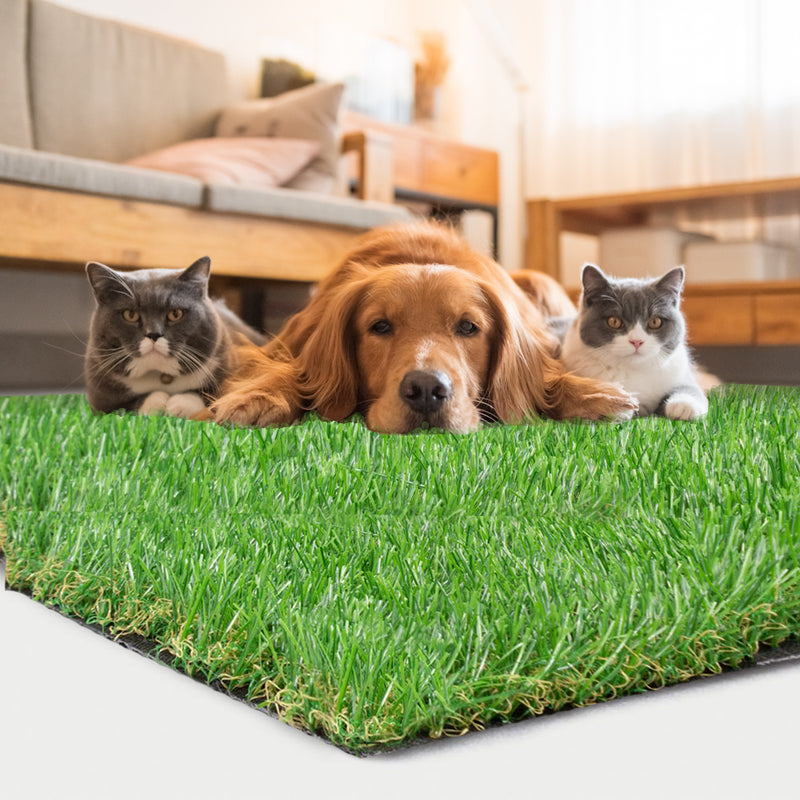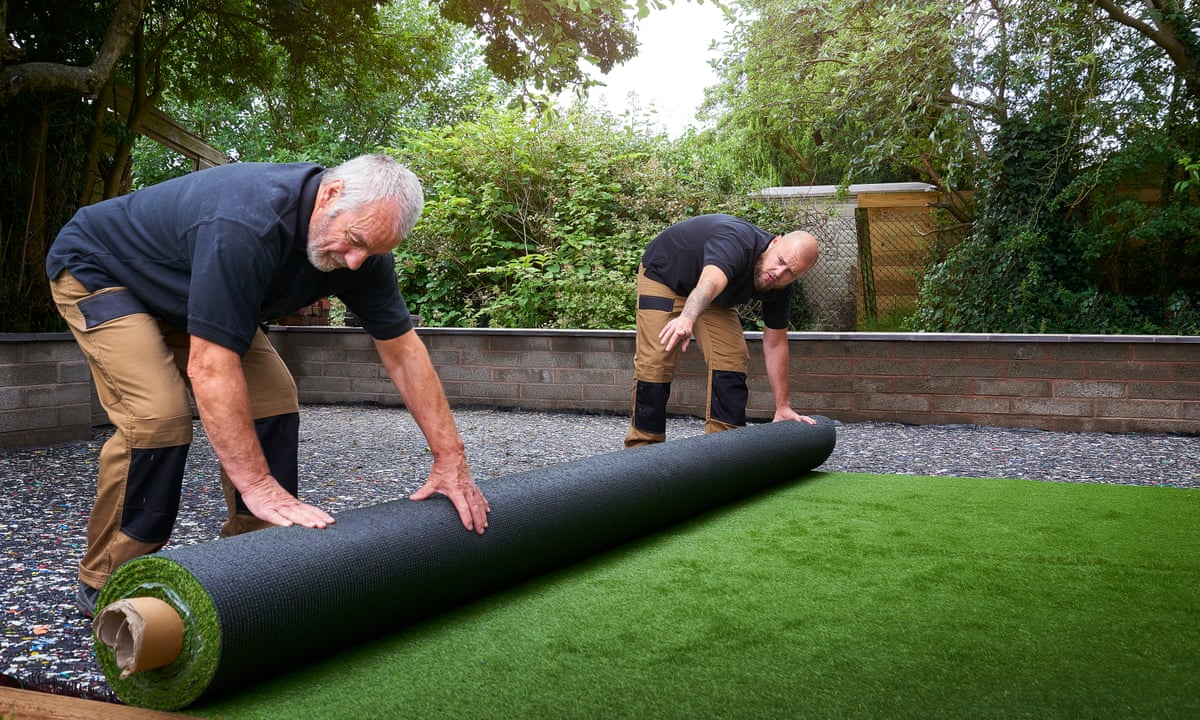Experience a Perfect Lawn with Arizona Artificial Turf for Any Outdoor Space
Delve Into the Environmental Benefits of Opting for Synthetic Grass Solutions
The adoption of fabricated turf remedies offers a compelling chance to address pressing ecological difficulties. By considerably reducing water usage and reducing the application of hazardous chemicals, these options not just advertise sustainable landscape design yet also protect neighborhood ecological communities.
Water Preservation Conveniences
Among the most considerable benefits of man-made turf is its capacity to preserve water. Typical lawn yards require significant watering, especially in areas susceptible to dry spell or water limitations. In comparison, synthetic grass does not require watering, considerably minimizing the general demand for water resources. This attribute is especially valuable in deserts where water shortage is a pushing problem.
By getting rid of the need for normal watering, man-made turf contributes to lasting landscape practices and assists reduce the environmental influence of excessive water consumption. Additionally, the preservation of water includes the decrease of drainage, which can lead to dirt disintegration and waterway contamination.
Furthermore, the installation of man-made lawn allows homeowners and communities to allocate water resources a lot more effectively, concentrating on necessary usages such as alcohol consumption water and farming. The change towards synthetic grass not only advertises accountable water use however additionally lines up with broader ecological goals focused on preserving natural resources.
As communities progressively focus on sustainability, the water preservation advantages of fabricated grass present an engaging situation for its fostering in commercial and residential landscaping tasks.
Lowered Chemical Usage
The transition to man-made lawn dramatically reduces the dependence on chemical treatments generally used in all-natural turf maintenance. Typical lawn administration normally entails the application of pesticides, plant foods, and herbicides to advertise growth and control insects. These chemicals can position risks to human health and wellness, neighborhood wildlife, and the atmosphere, contributing to dirt and water contamination.
In comparison, synthetic grass eliminates the demand for these unsafe substances. Once mounted, it requires minimal upkeep, mostly including regular cleansing and irregular infill replenishment. This decrease in chemical use not just benefits the instant environment however additionally adds to wider eco-friendly stability. By reducing the release of artificial compounds right into the ecosystem, synthetic grass advertises healthier dirt and water supply.
Moreover, the lack of chemical runoff related to synthetic grass installments assists secure neighborhood rivers from air pollution, supporting aquatic life and maintaining biodiversity. Arizona turf. As neighborhoods increasingly prioritize sustainable practices, going with synthetic grass offers a viable remedy that straightens with environmental conservation goals. Through this change, building owners can enjoy lavish eco-friendly spaces without compromising eco-friendly health, leading the way for a much more sustainable future
Lower Carbon Impact

Additionally, the installment of synthetic grass can cause significant water conservation. Natural yards need significant quantities of water for watering, which not just includes in the carbon footprint related to water extraction and therapy yet also strains regional water sources. On the other hand, man-made turf requires very little maintenance, requiring no watering, consequently dramatically lowering water use and its associated energy expenses.
Furthermore, the durability of artificial turf adds to its lower carbon effect. With a life expectancy of up to 15 years or more, the need for frequent replacements is reduced, causing less waste and reduced power intake in you could look here production and throwing away typical lawn choices. In general, synthetic grass offers a lasting choice for eco mindful landscaping.
Habitat Preservation
Environment preservation is an important consideration in the argument over landscape design options, specifically when comparing synthetic grass to natural yard. All-natural lawn yards usually need considerable maintenance, consisting of using chemicals, herbicides, and fertilizers, which can negatively impact local environments. These chemicals can seep right into the dirt and waterways, hurting native vegetation and fauna and interfering with regional environments.
Man-made lawn removes the demand for harmful chemicals, thus safeguarding close-by wildlife and preserving the integrity of surrounding communities. The setup of synthetic lawn can lead to the conversion of previous lawn locations into more biodiverse landscapes, such as pollinator gardens or native plant areas, which can support local wild animals.
Inevitably, the change to synthetic grass not just preserves water and lowers upkeep initiatives but also cultivates an extra unified connection between human tasks and the native environment, promoting environment conservation at the same time.
Long-Term Sustainability
Long-term sustainability is an essential consider reviewing the benefits of synthetic turf over typical lawn lawns. Among the most substantial advantages of synthetic lawn is its toughness; it can last as much as 15-20 years with minimal upkeep, whereas natural yard needs frequent reseeding and substitute. This longevity click to find out more lowers the requirement for constant sources, such as water, fertilizers, and chemicals, which are necessary for maintaining a healthy and balanced yard yard.
In addition, synthetic grass adds to a decrease in carbon emissions connected with grass treatment tools. Typical lawns frequently call for gas-powered lawn mowers, leaners, and blowers, all of which contribute to air contamination. Turf installation phoenix az. In contrast, synthetic lawn gets rid of the need for such equipment, advertising a cleaner environment
Furthermore, the production of man-made lawn increasingly utilizes recycled products, boosting its sustainability account. As producers adopt eco-friendly techniques, the ecological footprint of artificial turf proceeds to decrease.

Final Thought
The adoption of synthetic turf services provides significant ecological advantages, consisting of substantial water preservation, reduced dependence on dangerous chemicals, and a lower carbon footprint. site link Additionally, man-made grass help in protecting all-natural habitats by decreasing land disturbance and promoting long-term sustainability through making use of long lasting materials. Jointly, these aspects highlight the potential of synthetic grass to add favorably to ecological health and use a viable option to conventional landscaping techniques in a significantly resource-conscious globe.
In contrast, man-made grass does not require watering, significantly minimizing the total need for water sources. By lessening the release of artificial substances right into the community, artificial grass advertises much healthier dirt and water systems.
Additionally, the setup of fabricated turf can result in significant water preservation. In contrast, fabricated grass needs minimal maintenance, calling for no watering, consequently dramatically lowering water use and its associated energy expenses.
